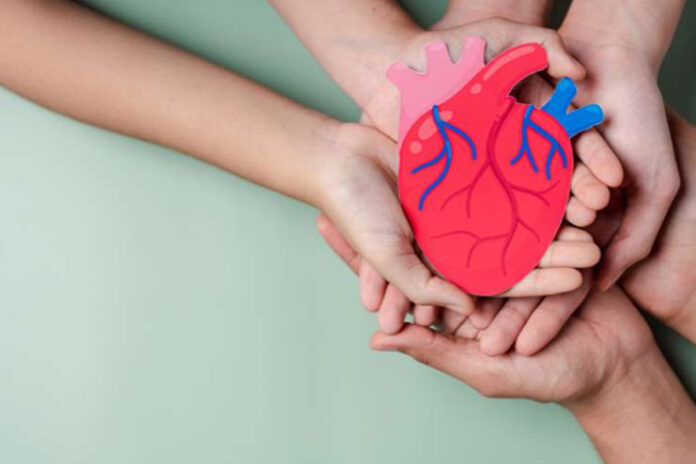Affiliate Disclaimer
Some links in this article are affiliate links. We may earn a small commission if you make a purchase through these links, at no extra cost to you. We only recommend products we find useful to our readersA “silent” heart attack is not the same as the dramatic chest clutching ones we see in movies. A lot of people who suffer from silent heart attacks are unaware that they are having one. A quiet heart attack occurs when there are no symptoms, only slight symptoms or signs not typically associated with a heart attack. If your heart isn’t receiving enough oxygen and blood, it will still be classified as a heart attack (myocardial infarction). It hurts your heart.
Similar to more obvious heart attacks, silent heart attacks can cause damage to your heart. However, if you are unaware that you are experiencing a heart attack, you may not receive the necessary medical attention to minimize the harm. For this reason, it’s critical to schedule time to focus on your emotional state.
Common Signs of a Silent Heart Attack

Due to the mask that silent heart attacks frequently wear, it is easy to mistake or overlook their symptoms. People often ignore or mistake mild symptoms that silent heart attacks might produce for other conditions. Look out for any of the following signs:
Chest Pain or Discomfort: Most heart attacks only cause modest chest pain or discomfort. Additionally, you can experience fullness, squeezing, or pressure. Usually, these symptoms start slowly, disappear, and then reappear.
It can get complex because these symptoms could be associated with anything less significant, like heartburn. If you suspect something is wrong, you should have a medical evaluation or even visit the emergency department.
Shortness of Breath and Dizziness: During a silent heart attack, you may experience an unexplained shortness of breath or feel breathless, often accompanied by dizziness. You may confuse these symptoms with respiratory or exhaustion problems.
Nausea: If there is no apparent digestive reason for the nausea or vomiting, it may be a silent heart attack. You might confuse it with a viral infection or stomach problems.
Weakness and Fatigue: Extreme weakness or exhaustion that surpasses typical fatigue may indicate a silent heart attack. It could be associated with general fatigue.
Other body parts: Pain or discomfort in the jaw, neck, back, shoulders, or arms may indicate a silent heart attack. Like a muscle strain, this pain may be minor or intermittent.
Not all symptoms are the same. Women may experience even more modest symptoms, such as unusual dizziness, lightheadedness, or upper abdominal pain. Men, however, frequently suffer from slight pain that radiates to the arms or discomfort in the chest. The gender imbalance emphasizes how important it is to pay attention to symptoms that may appear harmless.
How Doctors Diagnose Silent Heart Attacks

Diagnosing a silent heart attack is like uncovering a hidden mystery. The instruments to identify cardiac disease become crucial because the symptoms are frequently hazy or unclear.
- One of the initial lines of defense is the electrocardiogram or ECG. It monitors the heart’s electrical activity, highlighting any abnormalities that might indicate previous damage to the heart’s muscles. An ECG can reveal the indicators of a silent attack that might have gone unnoticed, even if the patient exhibits no symptoms.
- Blood tests are the next step. Troponin is one of the proteins which the damaged heart releases into the blood. Even if there was no immediate pain, elevated troponin levels are a reliable predictor of a heart attack.
- Echocardiograms can offer a moving image of the heart for a more detailed perspective, assisting medical professionals in identifying areas where damage has compromised the heart’s ability to pump blood.
- Regular examinations are essential, particularly for more vulnerable individuals, such as those who have a history of high blood pressure, diabetes, or high cholesterol. Frequent screenings lower the risk of long-term consequences by detecting silent heart attacks early.
Who Is Most at Risk?
Several factors influence the risk of heart disease and silent heart attack. The likelihood of an event increases with the number of risk variables you possess. You do not influence some of these elements. You can change some factors, and while they don’t directly cause heart disease, they may stress your heart.
Diabetes: Even if your blood sugar levels are steady, diabetes significantly raises your risk of heart disease, heart attack, and stroke. In actuality, heart disease and its consequences claim the lives of almost 70% of diabetics over 65. Diabetes also raises your chance of silent heart attacks, which can cause symptoms like exhaustion and asthma.
High blood pressure: Even high blood pressure overloads the heart muscle. As the pressure increases over time, the heart muscle thickens and stiffens and performs less well.
Smoking: Due to its stimulant properties, smoking cigarettes significantly increases your risk of having heart attack and also increases your heartbeat.
Body weight: Overweight or obese individuals, especially those with weight concentrated around their waist, are more likely to develop heart disease. It is still the case even if they have no other risk factors.
Physical inactivity: Frequent moderate-to-intense exercise helps control blood pressure, cholesterol, diabetes, and obesity, among other risk factors. However, if you don’t engage in physical activity, you risk losing that protection.
Although hereditary factors can lead people to heart issues at an earlier age, a family history of heart disease can potentially tip the balance.
The existence of chronic conditions—multiple health disorders that frequently overlap—makes everything more complicated. For instance, a person with diabetes and high blood pressure may not detect the symptoms of a silent heart attack due to their body’s overload with other stress signals. Routine checkups are crucial for people at risk, as these hidden symptoms, sometimes mistaken for different problems, can delay discovery and increase results.
How to Reduce Your Risk

The first step in lowering the risk of a silent heart attack is making heart-healthy daily decisions. A balanced diet is the foundation of health. Prioritize foods high in nutrients, such as lean protein, whole grains, fruits, and vegetables. These nutrients maintain healthy blood pressure and cholesterol levels, strengthening the heart, nourishing the body, and lowering inflammation. Unhealthy fats, processed meals, and too much sugar can silently clog your arteries.
The best companion you can have is exercise. Every day, try to get at least 30 minutes of moderate exercise, whether dancing, swimming, walking, or cycling. Exercise reduces the stress that might harm your heart while strengthening your heart muscles, lowering harmful cholesterol, and helping you maintain healthy weight.
The silent enemy is stress. Mental health management is equally important as physical health management to preserve the heart. Adopting practices like mindfulness, deep breathing, and meditation can help you maintain a balanced, peaceful state of mind because long-term stress raises your risk of heart disease. Additionally, sleep is essential since inadequate sleep alters stress hormones and blood pressure, both of which impact heart health.
Monitoring your blood pressure, cholesterol, and your blood sugar levels is crucial. Frequent examinations allow you to identify possible problems early on, long before they cause undetectable harm. A proactive step toward a healthier, heart-smart future is to keep these levels under control.
When to Seek Medical Help

Early detection is essential to avoid silent heart attacks’ long-term effects. If something doesn’t feel right, don’t try to “tough it out” or wait for the symptoms to worsen. When performing daily tasks, it is very essential to pay attention to symptoms, even moderate or uncommon, such as slight chest pain, mysterious exhaustion, or shortness of breath. These subtle signs may warn you of a severe issue like heart disease that you are unaware of.
Since the symptoms of silent heart attacks are easy to ignore or confuse with less severe conditions, they frequently go unreported. However, there is a greater chance of heart damage going unnoticed the longer you put off getting medical attention. Early management can significantly increase the possibility of a full recovery and reduce complications.
Even if your symptoms seem mild or transient, taking precautions is crucial. Examining yourself could save your life and provide you peace of mind. If you have any worries, speak with your doctor, particularly if you have a family history of heart disease, diabetes, or high blood pressure that puts you at higher risk.
Conclusion
Your first line of defense against silent heart attacks is awareness. You can significantly lower your risk by identifying the subtle indicators and adopting heart-healthy lifestyle choices. Make stress management, regular exercise, a healthy diet, and frequent checkups a priority. You might be surprised at how effective these preventative measures can be. It’s time to take active care of your heart, which functions silently all day and night. Your heart health is something you can influence, so take charge now rather than waiting for the signs to manifest.
References
- https://my.clevelandclinic.org/health/diseases/21630-silent-heart-attack
- https://www.mayoclinic.org/diseases-conditions/heart-attack/expert-answers/silent-heart-attack/faq-20057777
- https://www.medicalnewstoday.com/articles/silent-heart-attack
- https://www.goredforwomen.org/en/about-heart-disease-in-women/signs-and-symptoms-in-women/silent-heart-attack-symptoms-risks
- https://www.cedars-sinai.org/newsroom/aarp-8-warning-signs-of-a-silent-heart-attack-that-are-easy-to-overlook/
- https://www.heart.org/en/news/2021/06/23/silent-heart-attacks-all-too-common-and-often-overlooked
- https://www.mayoclinic.org/diseases-conditions/heart-attack/expert-answers/silent-heart-attack/faq-20057777
- https://www.nih.gov/news-events/news-releases/silent-heart-attacks-are-common-predict-risk-death-mri-diagnosis-shows
- https://familydoctor.org/condition/silent-heart-attacks/
- https://www.nationaljewish.org/education/health-information/living-with-heart-disease/risks-of-silent-heart-attacks
- https://www.mayoclinic.org/diseases-conditions/heart-disease/in-depth/heart-disease-prevention/art-20046502
- https://www.webmd.com/heart-disease/heart-disease-heart-attacks
- https://www.health.harvard.edu/heart-health/can-you-have-a-heart-attack-and-not-know-it
- https://www.verywellhealth.com/silent-heart-attacks-1746018
In this Article




















